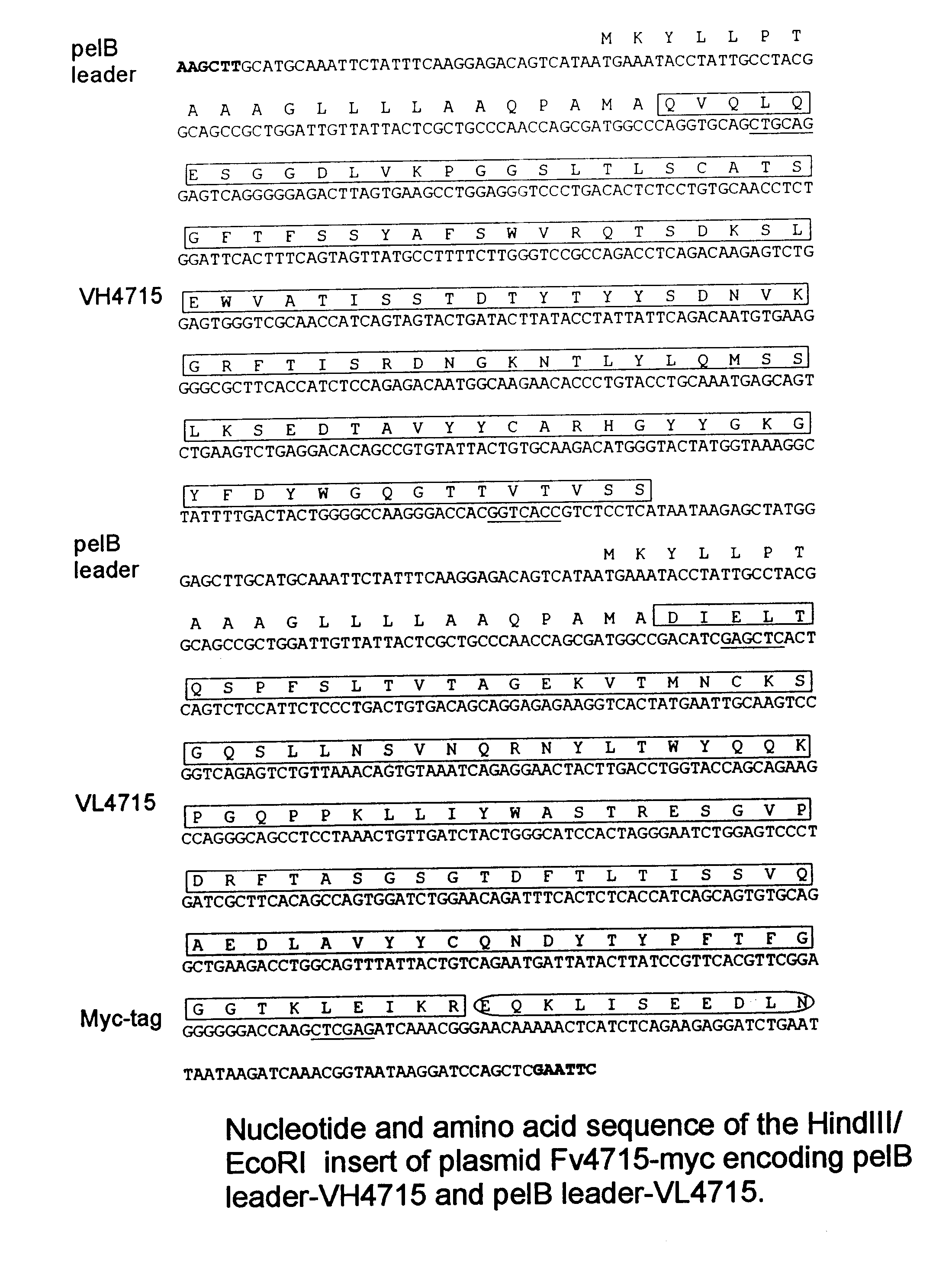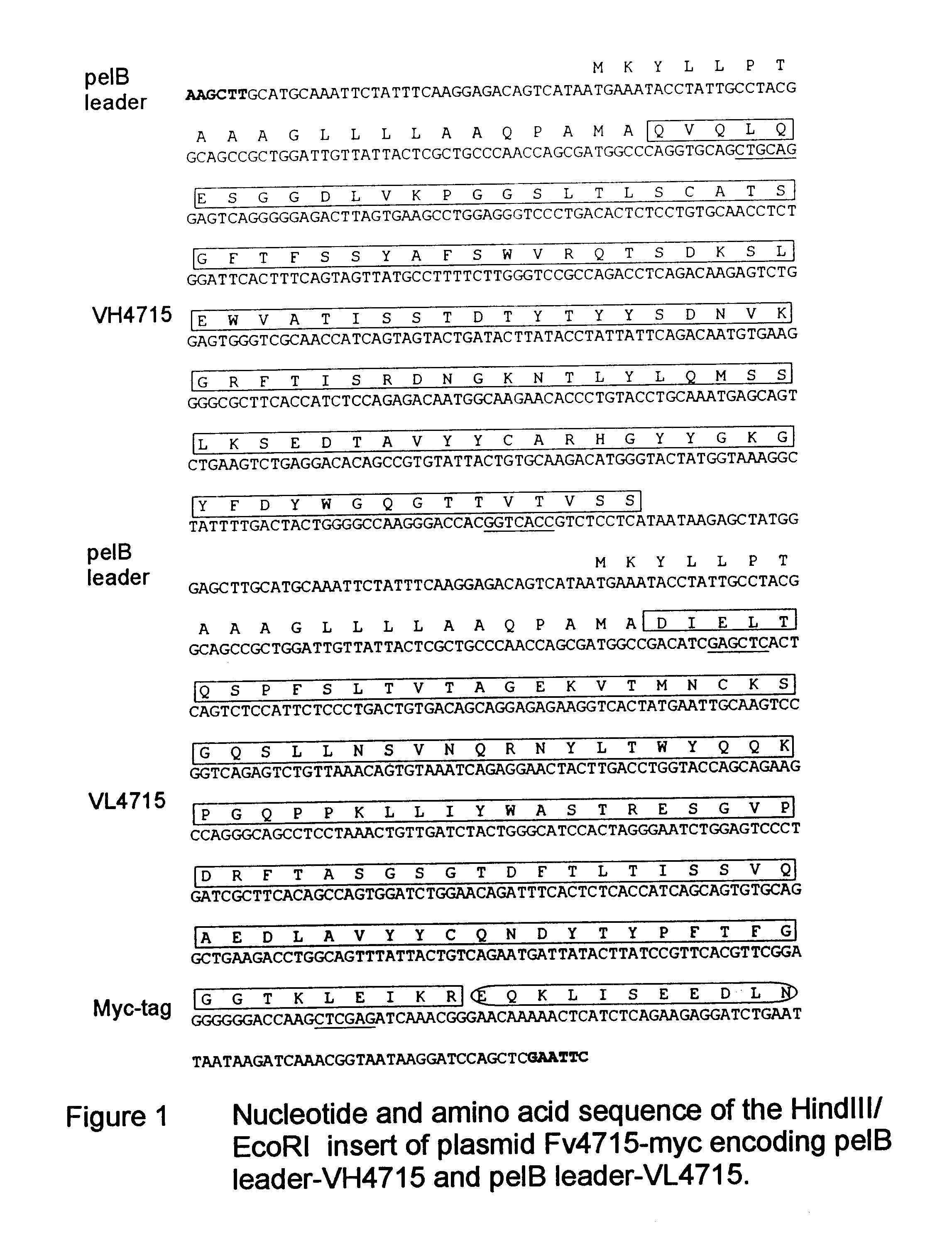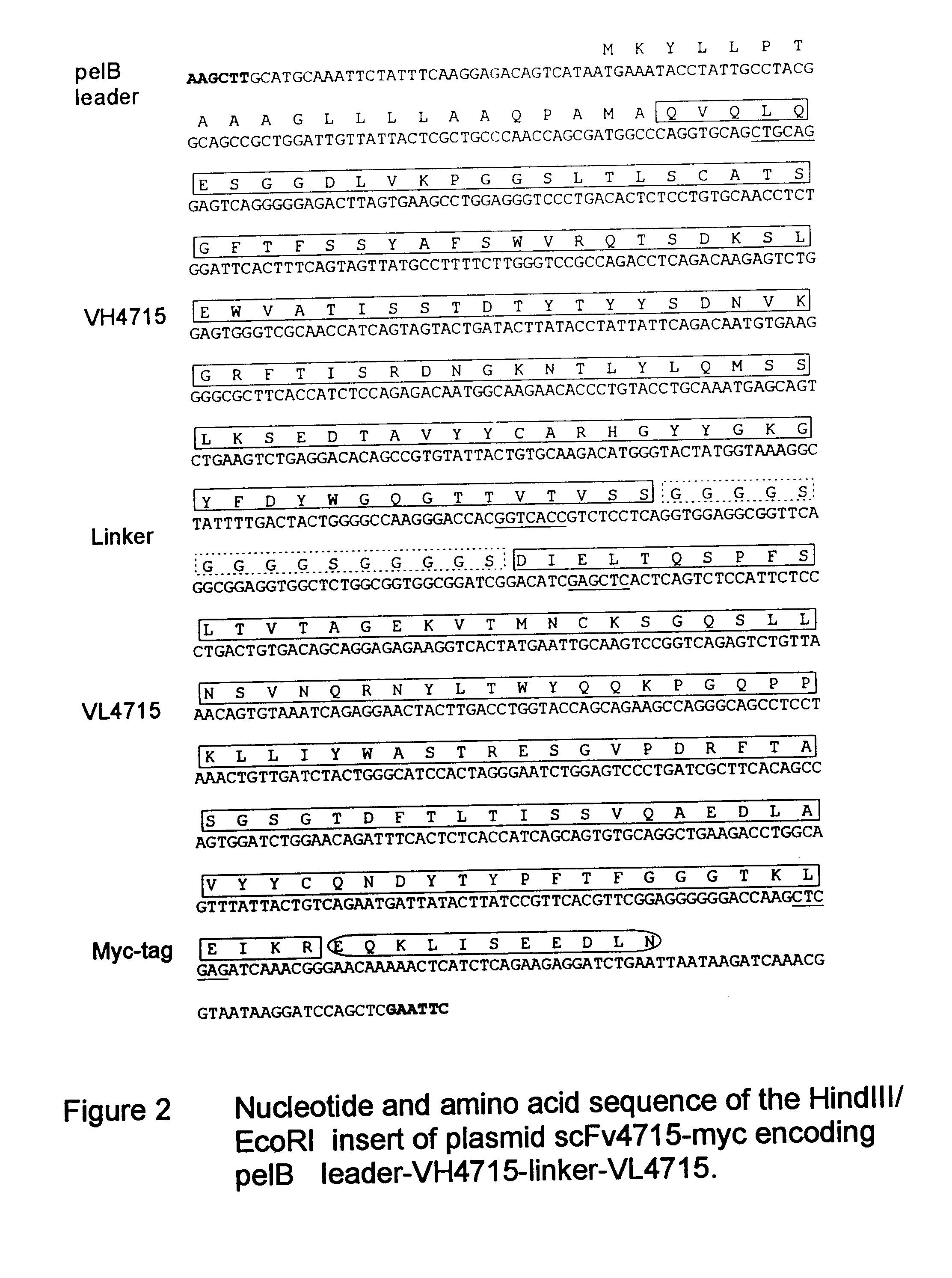Method of treating fabrics
a technology of fabric and treatment method, applied in the field of multifunctional, can solve the problem of restricted chemical synthesis of such compounds
- Summary
- Abstract
- Description
- Claims
- Application Information
AI Technical Summary
Benefits of technology
Problems solved by technology
Method used
Image
Examples
example 2
Scavenging Glucose Oxidase from Solution Onto Red Wine Activated Plastic
2.1 Preparation of a Bi-Headed Antibody Fragment
A bi-headed antibody fragment (12.49) with dual specificity for red wine and glucose oxidase was constructed, produced and purified as follows:
2.1.1 Preparation of a Red Wine Specific Heavy Chain Immunoglobulin Fragment from Llama
2.1.1.1 Antigen Preparation
Cote du Rhone red wine (Co-op) was filtered through a 0.2.mu. membrane and then used either neat or diluted in PBS as appropriate.
2.1.1.2 Immunisation Schedule
A llama, kept at the Dutch Institute for Animal Science and Health (ID-DLO, Lelystad), was immunised first with BSA-red wine linked by periodate chemistry and thereafter boosted one month later and then a further two months later with red wine conjugated to PLP. Serum was removed 14 days after each boost for analysis.
2.1.1.3 Polyclonal Sera Analysis
Sera were analysed by ELISA against red wine as follows: 1. A Greiner HB microtitre plate was sensitised with ...
example 3
Scavenging Glucose Oxidase from Solution Onto Red Wine Activated Cotton
3.1 Activating a Cotton Surface with a Bi-Headed Antibody Fragment
Cotton sheets (approx. 20.times.10 cm) were stained with red wine by immersion of the sheets in red wine for 2 hours at 37.degree. C. The stained sheets were allowed to air dry at 37.degree. C. and then stored in the dark for 4 days in sealed foil bags. Stained sheets were stored in foil bags until required at -20.degree. C. Stained cotton swatches were prepared by punching circular discs of fabric from the sheets using a hole puncher. Swatches were pre-washed in 0.1 M sodium carbonate buffer pH 9.0 and a Nunc microtitre plate was blocked by incubation of wells with 200 .mu.l of 1% (w / v) Marvel. Swatches were placed in the wells of the microtitre plate and 100 .mu.l bi-head 12.49 at 5 .mu.g / ml in 0.1 M sodium carbonate buffer pH 9.0 was added per well. After a 15 minute incubation at room temperature the swatches were washed three times with 0.1 M ...
example 4
The Capture of Oil Bodies on Fabric
The experiment exemplifies capture of particles (plant oil bodies) on cotton fabric which has been preprepared with a biorecognition molecule able to bind to cotton and specifically scavenge particles from the surrounding environment.
1.1 Oil Body Isolation
Oil bodies were isolated from rape seeds essentially as described by Tzen et al. (J. Biol. Chem. 267, 15626-15634). Briefly rape seeds were ground to a fine powder in liquid nitrogen using a pestle and mortar, and sieved. 1 g crushed seed was homogenised in 4 g grinding medium, on ice. The sample was mixed with an equal volume of floating medium containing 0.6M sucrose, and centrifuged. The `fat pad` was removed to another tube, resuspended in floating medium containing 0.25M sucrose, and centrifuged. The `fat pad` was collected and stored at 4.degree. C.
1.2 Preparation of Oil Bodies Containing Nile Red
In order to be able to visualise the presence of oil bodies on skin or cotton, they were prepare...
PUM
| Property | Measurement | Unit |
|---|---|---|
| chemical equilibrium constant Kd | aaaaa | aaaaa |
| chemical equilibrium constant Kd | aaaaa | aaaaa |
| chemical equilibrium constant Kd | aaaaa | aaaaa |
Abstract
Description
Claims
Application Information
 Login to View More
Login to View More - R&D
- Intellectual Property
- Life Sciences
- Materials
- Tech Scout
- Unparalleled Data Quality
- Higher Quality Content
- 60% Fewer Hallucinations
Browse by: Latest US Patents, China's latest patents, Technical Efficacy Thesaurus, Application Domain, Technology Topic, Popular Technical Reports.
© 2025 PatSnap. All rights reserved.Legal|Privacy policy|Modern Slavery Act Transparency Statement|Sitemap|About US| Contact US: help@patsnap.com



